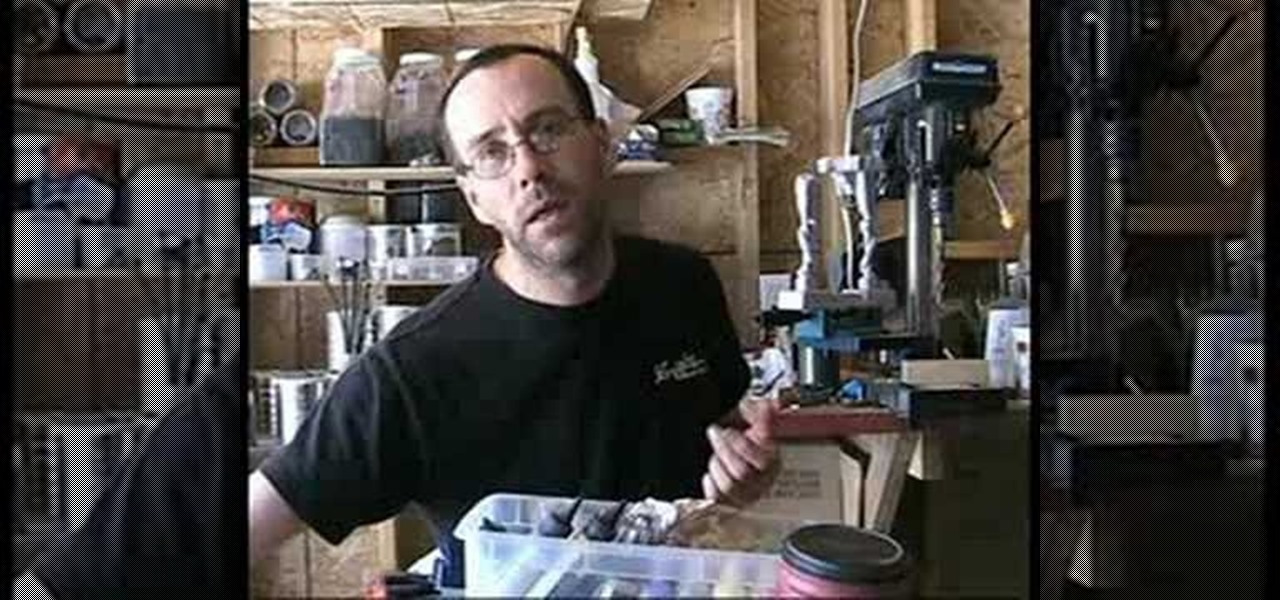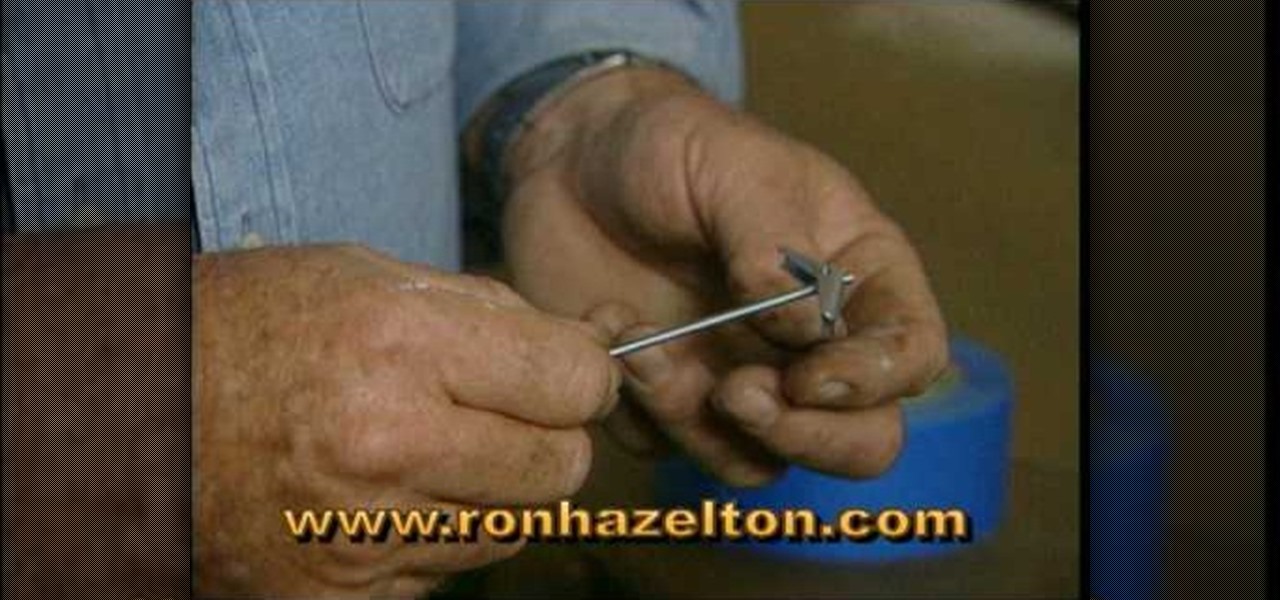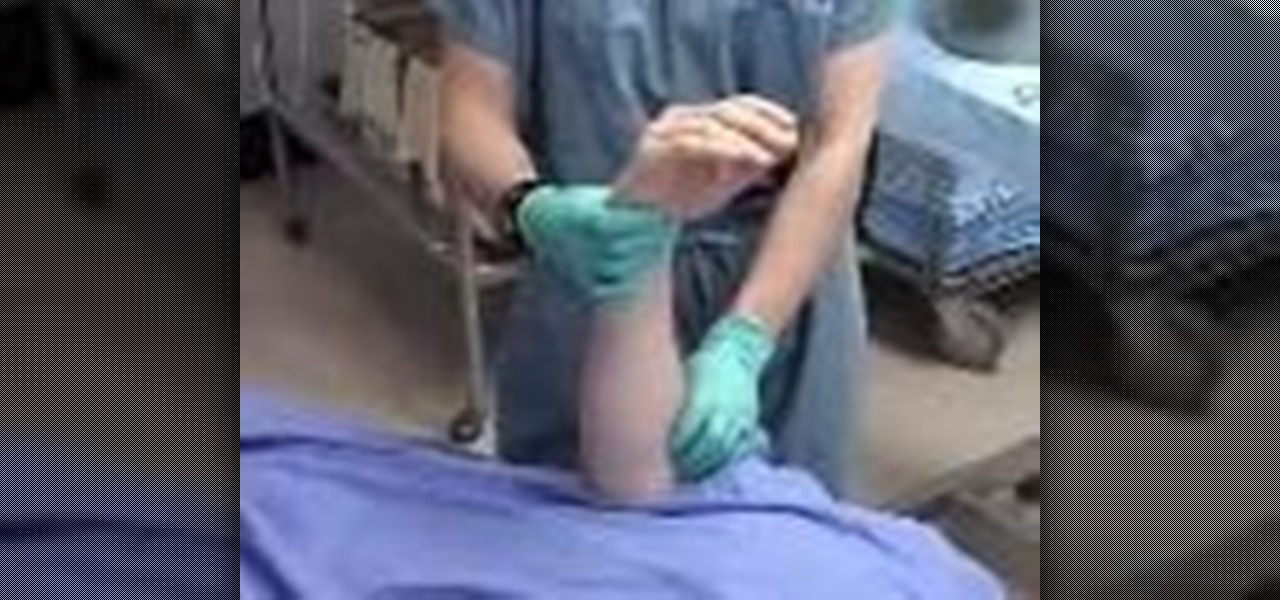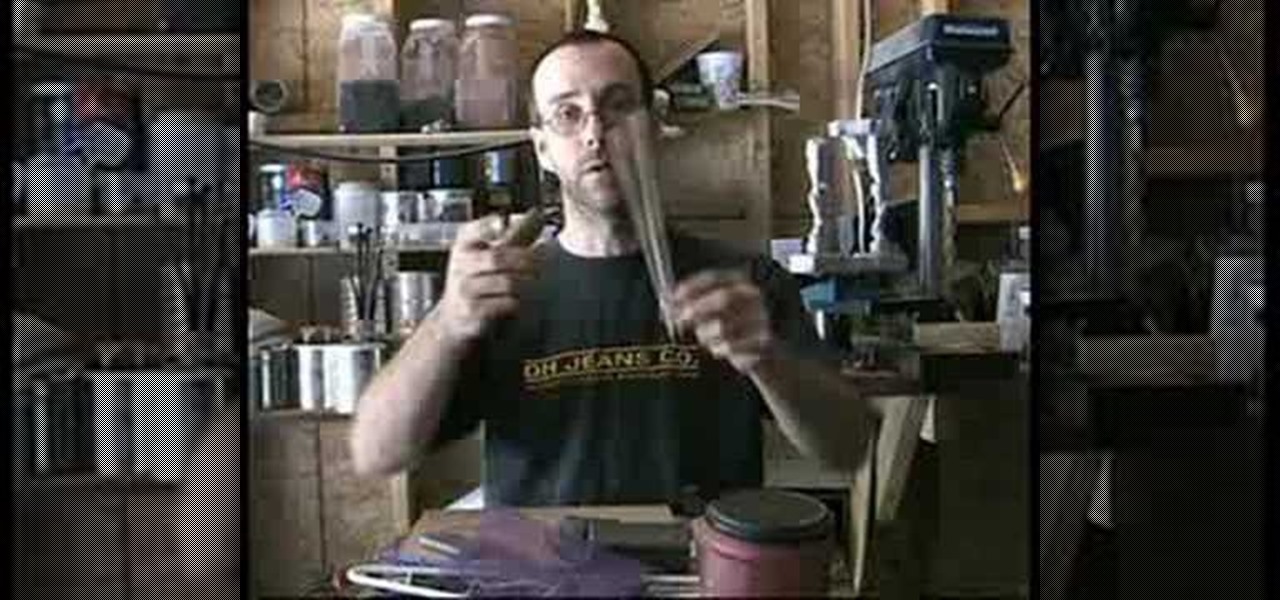
Simon Leach is an online pottery instruction legend, and in this three-part video, he instructs us in a procedure somewhat outside his normal area of expertise by creating a homemade plaster bat, which is basically a flat plaster block used for drying wet clay. For the hardcore at-home ceramics whiz this could be a very fun and rewarding project. Just make sure you are comfortable working with both plaster and clay!
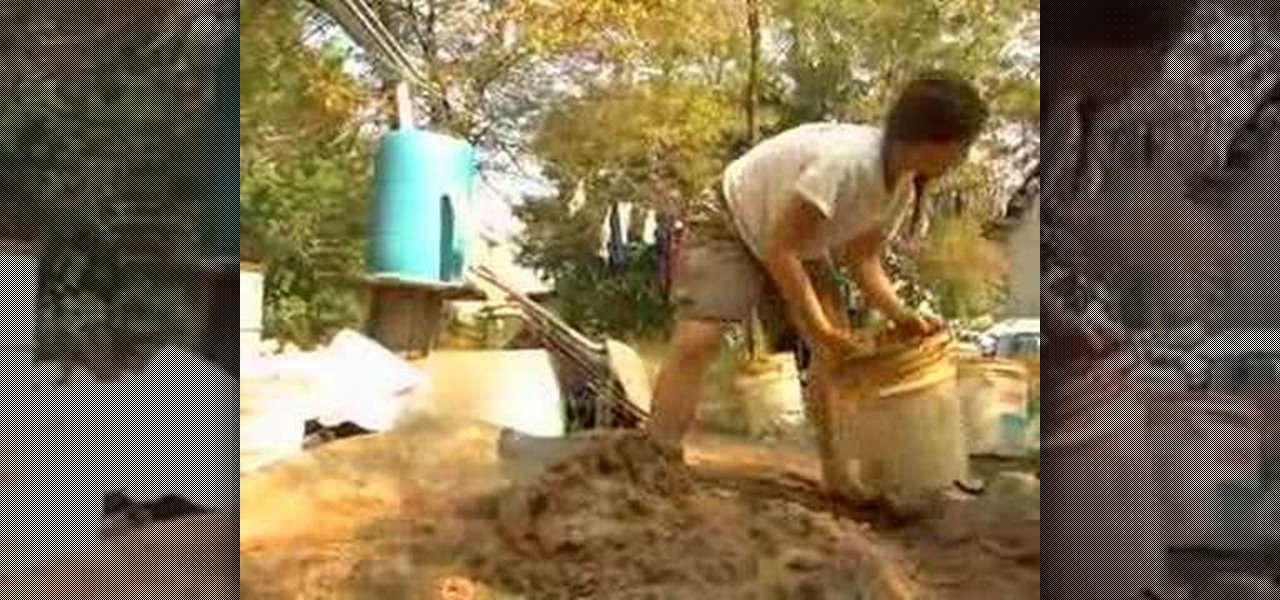
Lately, there's been a lot of building work going on around Dancing Rabbit. So for this episode of Dancing Rabbit TV, they're taking the opportunity to provide a one-two how-to natural DIY building lesson, an in-depth video about earthen plastering techniques and application. Tamar will guide you every step of the the build process, showing how easy it is to make natural plaster from just a few simple ingredients, both making and mixing the plaster, and then applying it to a natural home wall...

Dr Kreepy, Halloween craftsmen, shows a cheap and easy way to make full and partial skulls from Plaster of Paris! For this project, you will need a plastic skull, cheese cloth, a paintbrush, melting latex, anchoring cement, and Plaster of Paris. Watch this video special effects tutorial and learn how to build a latex skull mold to make plaster skulls or skull fragements.

Watch this instructional model making video to make miniature plaster tile flooring for war game terrain. Add a thin layer of plaster for a smooth level floor for your game piece or diorama. The layer of plaster simulates concrete as is, or you can etch in tiles while the plaster is slightly damp. Make convincing walls and flooring for doll houses, dioramas, Warhammer and war games.

Ron the Builder demonstrates how to plaster a wall. Mix the sealant with water to achieve the right proportions and spread evenly over the wall with a paint roller. Once the sealant is dry, you may begin plastering. Combine half a bag of plaster with the appropriate amount of water in a large bucket with an industrial mixer. Mix until the plaster is smooth. Pour the plaster onto a flat board. Using a trowel, scrape some plaster onto your hawk. Then, using a flick of the wrist, quickly scoop s...

This video illustrate us how to plaster a wall. Here are the following steps: Step 1: First of all take white cement and mix it with the color of your choice and make a paste of it, add fevicol or any other adhesive to it.

This Home and Garden video tutorial shows how to hang heavy art on lath and plaster walls. This is really very easy and simple to do. Heavy objects of art will need big size nails for hanging. Hammering big size nails on lath and plaster wall is not possible. The nails just go in after a little distance. Then what do you do? There’s a really very simple and easy method of hanging heavy art objects on lath and plaster walls. You just need to screw in. Take a screw, hold it perpendicular to the...

Watch this instructional video to make cheap molds for casting miniatures. You can then duplicate pieces for building your diorama or game terrain. Sculpt original forms using polymer clay, and layer on latex to make a cheap rubber mold. Or, you can use pre-made forms to press shapes into a soft mold. This video provides several modes of creating plaster forms and duplicates for miniature sculptures.

Eager to start your lime plastering project? Check out this video to gain some advice from two pros!

Doing some DIY-style renovations on your home? How about that ceiling? Need to retouch or put up a plaster ceiling? In this Storyteller video, learn about the nuts n bolts of putting up a plast ceiling and how to go about accomplishing this with your own two hands!

This three part instructional sculpture video demonstrates how to make a two part plaster mold. Make a plaster mold to make stop-motion animation puppets from clay models. A plaster mold can make casts out of almost any material. This model will be cast out of foam rubber with a movable metal skeleton.

Here is one method of making model brickwork and detailing wood for dioramas and miniature game terrain. Carve some light lines into a flat piece of balsa wood and coat it with a thin layer of plaster. This simple trick creates a realistic brickwork effect for miniature dioramas, architectural models, Warhammer and doll houses.

Watch this instructional video to build miniature rock walls for dioramas and game terrain. You can actually cast your miniature gates and brick walls out of plaster for a convincing effect. Use cheap and convincing materials such as sifted dirt, sand, plaster, and twigs to make realistic looking rock walls for your tiny scene.

This video illustrate us how to paint new plaster. Here are the following steps: step 1: First of all take white cement, oil bound paint, fevicol and paint brush.

We need a plaster roll, some vaseline,and a hair band. Put some vaseline under the eyes. Plaster the strips to 1/3 of an inch, dip it in the water and place it across the nose. Then take another strip, dip it in the water and place it across the earlier one. Take a larger strip, dip it in the water and put it on the forehead, and two more on the cheeks. Now take a pair of scissors and cut pieces accordingly and place it all on your face after dipping it in water. You need to cover the face, l...

Will Wilks and Tom Couch demonstrate how to make a SlipKnot mask. You will need tights, newspaper, plaster of paris, paint and shaping tools such as knives. First, put the tights on your face. Then rip the newspaper into strips and have a friend apply it to your face with the plaster of paris. Wait for it to dry and then cut off the back of the tights to remove the mask from your face. Keep drying the mask overnight. Next, shape the mask to the desired form. You can use more plaster of paris....

When faced with old, damaged plaster walls, one technique to dress up the room is to install drywall over the existing plaster. A drywall overlay gives the walls a smooth, fresh surface that's ready for new paint, paper or trim. This is a common technique used among professional contractors hired to renovate houses bought under foreclosure. For example, real estate companies that invest in foreclosures often deal with houses that are more than 50 years old and exhibit serious signs of aging. ...

This video tutorial is a quick run-through on the process used to make a plaster mold from a skull, and then a couple casts from it.

Watch this step-by-step essential guide to repairing plaster and plasterboard. Learn what equipment to use.

Take a plaster board and convert it into a fake brick wall to use in your modeling projects.

Ron Hazelton shows the most secure way to hang heavy mirrors or art on plaster walls using toggle bolts. Attach a sturdy hanging wire to the piece if necessary. Draw a level line on the wall where the top of the piece will go. Stretch the hanging wire taut and measure the distance between the wire and the top of the frame. A two-bolt system will keep the piece level. Drill two holes this distance below the wall line. Using masking tape prevents the plaster from chipping. Fold the toggle wings...

To make roman columns, ideal to create space between door and living room. Materials required :

In this video you learn to make a spooky tree with decorations for a Halloween lawn ornament. They start you off with getting a branch that has limbs going off to look like a dead tree. Next they spray it with glossy black paint. They found an urn to put the tree in but you can use any pot. Mix some plaster up after you measure how much you will need to fill whatever pot or container you have chosen. Then you fill it with the plaster, stick your branch in it and secure it with tape. While thi...

We all know how it goes: We purchase a bundle of new binders for our classes, get entranced by some cute kawaii stickers, and plaster these little babies all over our binders. And then, approximately two months later, we question why we ever did such a thing and want them off.

Whether it's research, a school project or term paper, going on an expedition, what have you, having to preserve animal tracks should be a part of your bag of tricks that you can do. But don't just grab some random plaster of paris and just start pouring. Check out this video first and learn how to properly preserve the animal tracks that you find in the wild.

Here are some examples of brickwork for dioramas or war game terrain. Create a fine grit coating for foam carvings using a mixture of white glue, paint and fine sand. Press in brick patterns into foam, or if working in smaller scale, you can coat cardboard with a thin coat of plaster. Find old pieces of dry flat wood to create miniature slats of wood for sides of a barn or haunted house.

This video shows how a plastic cast is applied by a surgeon or a trained specialist.

Decorative dragonflies are usually associated with little girls' shams and pink backpacks also plastered with iron-on hearts and happy faces. But you don't have to be ten years old to enjoy the dainty beauty of these winged creatures.

Don't wait for a full moon to unleash your inner beast. Get your growl on with these tips on creating the ultimate werewolf mask.

Let your creativity out by making your own sidewalk chalk, which you can color however you want. You'll need plaster of paris, a mixing bowl, powdered tempura paint, warm water, wax paper and tubular molds. Once you mix everything and colored with the paint, set your mold, let them dry and then start drawing!

This instructional how-to video demonstrates how to apply a volar slab cast to a patients forearm. Volar slab casts are used for forearm and wrist injuries. Follow along and learn how it's done. All you need to apply a volar slab cast is: web roll, rolled gauze, a bucket of warm water, and plaster slabs.

This medical how-to video illustrates how to properly apply an ulnar gutter cast to a patient. To carry out this procedure you will need web roll, three inch plaster slabs, rolled gauze and a bucket of warm water. Follow along with this video and learn the proper technique for applying an ulnar gutter cast.

Making a prop for a science fiction movie? This how-to video dives step by step guidance on how to build a super cool, futuristic, sci-fi, cryo containment chamber. You will need a cylindrical object, craft foam or sytrofoam, a hot glue gun, plaster of Paris, aquarium line tubing, and paint. Check out this video prop-making tutorial and learn how to build a great sci-fi like cryogenic containment chamber.

Add leaves and patterns to your mold! This how-to video shows you a way to create an organic design in your molds. Watch this video sculpture tutorial and learn how to design tile molds with leaf and different pattern imprints.

Bring the Italian countryside into your home with this technique. Watch as our host shows you how to decorate your walls with terra fresco. Terra fresco simply involves using plaster and paint. Use two or three different colors of paint for optimum results. This interior design video will appeal to you if you're looking for something simple or dramatic and includes everything from walls to murals to painted furniture.

Watch this instructional model making video to begin making war game terrain out of foam. This video introduces different types of foam and the varying strengths of high density foam. It's also possible to cast plaster molds with foam. Use foam as the basic structure for war games terrains, model railroads, architectural models and miniature dioramas.

You can paint your plaster blue and coat it with a gloss, but there are easier ways to make artificial water for miniature dioramas, architectural models and war game terrain. Easy Water is a product made up of small plastic pellets that need to be melted and poured onto the model. You cannot use this on styrofoam, obviously. This instructional video provides some alternative methods for creating water effects on miniature dioramas.

If you are a dedicated model maker, watch this instructional video to make a handy tool for sculpting and working with miniatures. These homemade wood tools are good for a variety of purposes. It can be made from wood as small as match stick stock up to 1/2'' by 1'' stock. Use this wood tool for modeling clay, greenery or spreading glue plaster and wiping off the excess.

This instructional video provides examples various supplies for war game terrain and diorama making. Most of these supplies for miniatures can be found at a local dollar store. Look for cardboard tubes, plastic sheeting, high density foam, metal foils and wires, plaster, sand twigs and other found materials.

Want the warmth and stylishness of a hat without the hair-plastered-to-head look when you remove it? It is possible. With this how-to video, you can learn to get rid of that nasty hat-hair.









